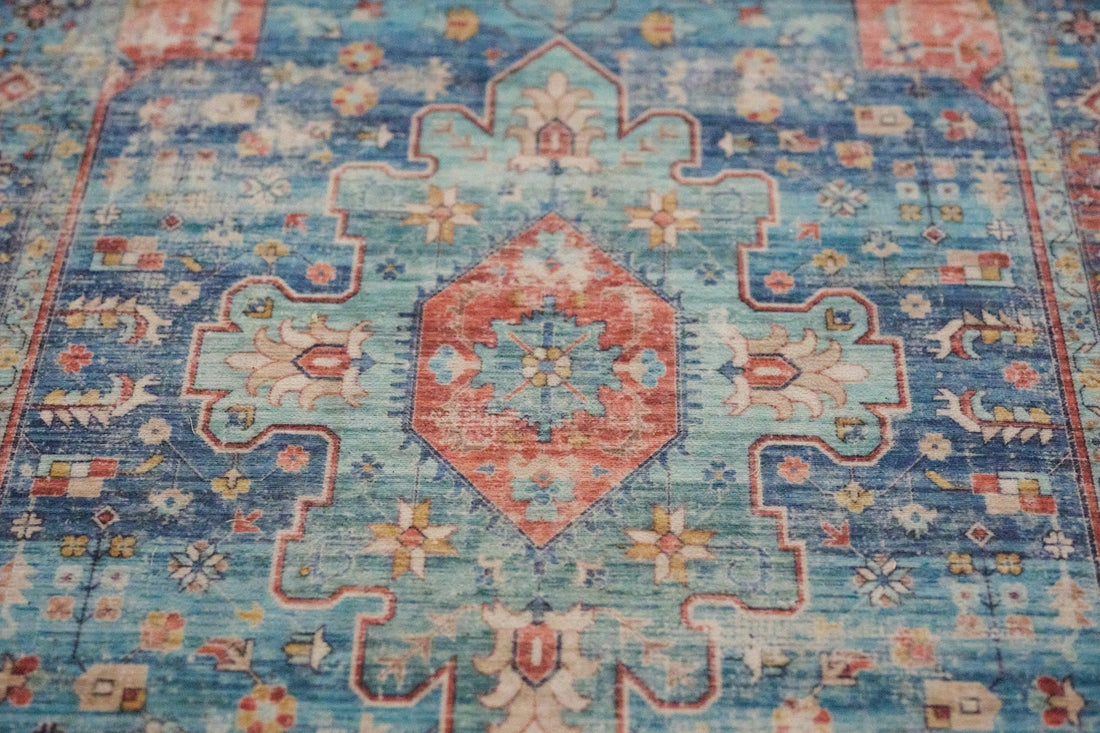Handmade area rugs are often the highlight of a room. They bring warmth, texture, and character that machine-made rugs can't quite match. When placed thoughtfully, they can tie together furniture, soften flooring, and show off personal style. But with all that beauty comes the need for care, especially when it comes to protecting them from sunlight.
In Frisco, steady sunshine through most of the year makes it easy to forget how much damage sunlight can do. The truth is, even the highest quality handmade area rugs in Plano can fade over time if exposed to too much direct sun. The rich colors start to lose their depth, the fibers can dry out, and the rug begins to look worn well before its time. Learning a few easy ways to protect your investment can go a long way in keeping it looking sharp for years.
Understanding Sun Damage
Even filtered daylight can affect a rug more than you might think. Ultraviolet rays are hard on natural fibers, and handmade rugs, especially those made from wool or silk, are extra sensitive. While everyday foot traffic takes its toll from the ground up, sunlight works from the top down, drying out dyes and weakening the strength of the threads.
What happens next varies from rug to rug. Some fade unevenly, leaving one side lighter than the other. Others take on a yellowish tone. Some become thinner and feel brittle underfoot. What’s worse is that these changes often sneak up. At first, they’re hard to notice. Then one day, you’re vacuuming and realize one part of the rug has faded into a whole different shade.
Here’s what to watch for:
- Colors becoming dull or washed out, especially reds and blues
- Edges or patches that look lighter than the rest
- Texture starting to feel dry, almost crunchy
- Sudden fraying in areas near windows or sunny doorways
Someone in Plano shared that after just one summer, their handmade Persian rug had lost much of its deep burgundy tone on the side facing their bay window. Their furniture helped block part of it, which showed just how strong the contrast could become between protected and exposed zones. The good news is that with the right steps, this kind of fading can be avoided or at least slowed way down.
Sun damage doesn’t mean giving up on natural light. It just means thinking a little more carefully about where and how you use handmade rugs at home. Small changes in placement and protection can keep things looking sharp without turning your rooms into dark caves.
Protective Measures for Sun Exposure
Once you know how sunlight affects your handmade area rug, the next step is figuring out how to lessen the impact. The good news is you don't have to cover your windows year-round or rearrange your furniture every week. Simple tweaks can go a long way.
Start by rotating your rug every few months. This helps ensure that all sides get exposed to light evenly. Without rotation, one area can fade faster than the others, especially if part of the rug sits in direct sunlight near a window or glass door.
Window treatments like curtains, blinds, or shades are another low-effort fix. You don’t need to keep the windows covered all the time. Even pulling the curtains during peak sun hours, usually mid-morning to mid-afternoon, can reduce the damage. Many people in Frisco use light-filtering shades that still let in natural light without the harsh UV rays.
Another good option is UV-protective window film. It’s clear and nearly invisible once applied, so you don’t lose your view. This film helps block some of the sun’s harsher rays before they ever hit your rug. While it doesn’t completely prevent fading, it certainly slows it down.
Here’s a quick recap of how to protect your rug from sunlight:
- Rotate the rug every 2 to 3 months
- Use curtains or blinds during peak sunlight hours
- Apply UV-blocking window film if your home gets a lot of direct sun
- Don’t leave furniture in one spot for too long, it can create uneven aging
- Avoid placing rugs under large skylights or south-facing windows without shade coverage
These steps don’t take much time, and once they become part of your usual routine, they’re easy to keep up. The more consistent you are with these practices, the less likely your rug will suffer early fading or fiber damage.
Choosing The Right Rug Placement
Where you decide to place a rug can make all the difference. In rooms that get lots of natural light, think about whether that sunlight hits the floor directly. Open-concept homes or high-ceiling areas may have spots that see more intense rays during the day than others.
Try shifting handmade rugs to places where the light is bright but not direct. Corners that receive filtered light or interior walls tend to be safer zones. Hallways can be tricky if they line up with patio doors or tall windows, so it’s worth reevaluating those spots from time to time.
Avoid placing rugs right in front of tall, uncovered windows, especially those facing west, where the afternoon sun packs a stronger punch. If you love that look, make sure you offset the risk with extra sun protection using blinds or film.
If you’re decorating a sun-filled space and want texture without the wear, consider layering. Use a stronger, sun-resistant rug as a base and top it with a lighter handmade piece that’s easy to pick up and move. That way, you keep the style without exposing your more delicate rug to constant rays.
One homeowner shared that they moved their wool rug from a bright sunroom to an open living area where the light was softer. Within a few months, they noticed the fibers bounced back and the fading stopped getting worse. Changes don’t have to be drastic to work, they just have to be thoughtful.
Using Outdoor Spaces Responsibly
If you're tempted to style outdoor areas with handmade rugs, think twice. Not all rugs are made for the outdoors, and sun exposure outside is a whole different level. UV rays hit harder, and there’s no filter unless you’ve got full shade.
Handmade rugs should be kept inside, even if they’re used temporarily on a covered patio. For short weekend parties or during cooler seasons, a rug might be fine out there for a few hours. But after that, it’s best to bring it back in. Leaving it out too long, especially during Frisco’s summer months, can speed up fading and weaken the structure of the material.
For porch or patio styling, go with rugs made from sturdier blends designed to take sun, rain, and foot traffic without falling apart. They won't offer the same softness or craftsmanship, but they’ll keep your handmade pieces from taking unnecessary damage.
If your rug has to be used outdoors for an event, try placing it under furniture or cover it with a canopy. That little buffer against the sky can help reduce direct sunlight and limit wear during the time it’s outside.
Keeping Your Rugs Safe And Beautiful
Sun damage might not happen overnight, but it builds slowly. Taking steps early, like choosing smarter placements, rotating rugs, and filtering sunlight, helps protect your rug’s colors, texture, and overall structure. The work doesn’t need to be hard, it just has to be regular.
Handmade area rugs add character and warmth that few other decor pieces can match. In a sunny town like Frisco, they need just a bit more attention to stay at their best. Sunlight doesn’t mean you have to sacrifice style. With the right habits, these rugs can stay bold, soft, and strong even in bright, cheerful spaces.
Each rug has its place, and sometimes all it takes is a small shift or new shade solution to keep that piece looking just as good as the day it was placed down. You don’t have to give up on natural light, just learn how to work with it.
If you're looking to add warmth and personality to your space while keeping sun damage at bay, check out our wide selection of handmade area rugs in Plano. At RugTown, we carry unique designs in a range of sizes that bring comfort and style to every corner of your home.

